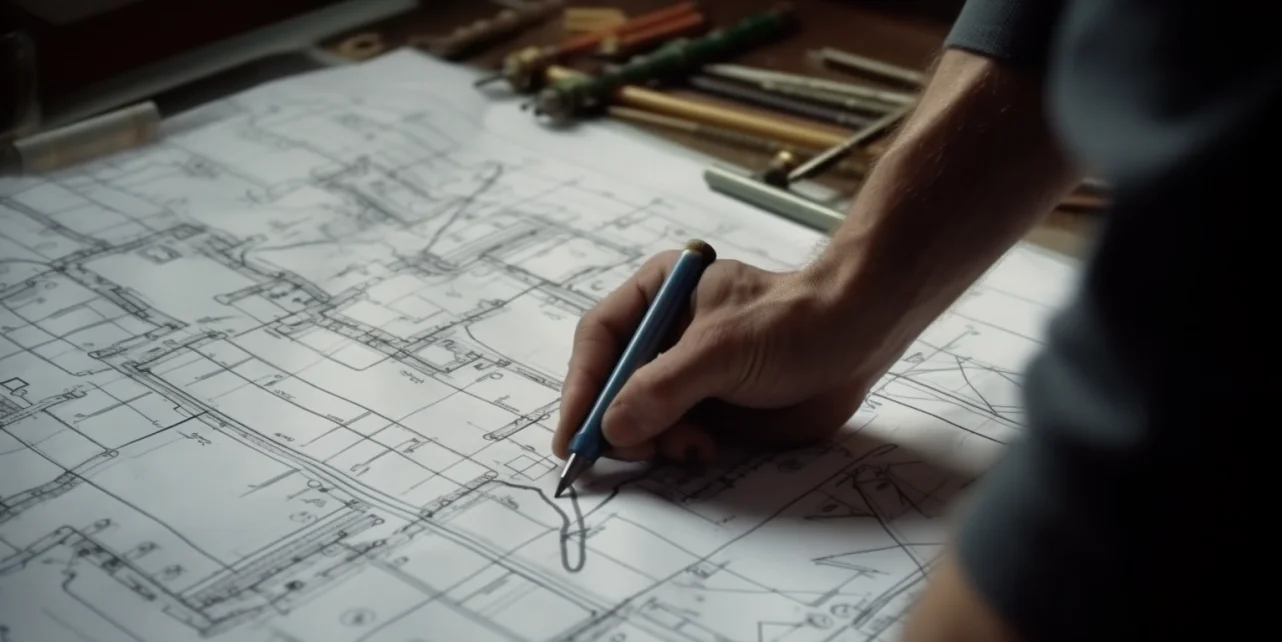Estimating plumbing involves determining the cost, time frame, and materials necessary for a plumbing project. This process is essential for both residential and commercial plumbing projects and requires a detailed analysis of the scope of work.
To begin, the estimator must gather all relevant information, including the project plans, specifications, and any special requirements. They also need to understand the project budget, client needs, and any unique considerations.
Next, the estimator will evaluate the site conditions, such as access points, existing plumbing systems, and any potential obstructions or challenges. This helps to identify potential areas that may require extra time, materials, or labor.
Once all the information has been gathered, the estimator will use their experience and knowledge to create a detailed breakdown of the project. They will estimate the quantity and cost of materials, the number of hours required for labor, and any additional expenses such as permits or equipment rental.
Accuracy is critical in plumbing estimates to avoid any surprises or delays during the project. Estimators must consider the quality of materials, the type of plumbing system, as well as any potential design changes or modifications that may arise during construction.
Finally, the estimator will present their findings to the client, including a detailed breakdown of the estimated cost and timeline of the project. Communication with the client throughout the estimating process is key to ensure transparency and understanding of the proposed project.
In conclusion, estimating plumbing is a vital step in any plumbing project. It requires attention to detail, thorough analysis, and effective communication to ensure the project’s success. By accurately estimating the cost and timeline, the client can budget and plan accordingly, and the project can be completed efficiently and within budget.
Understanding the Basics of Plumbing Estimating
Plumbing estimating is the process of determining the cost, time frame, and materials needed for a plumbing project. It involves evaluating all aspects of the project, including the scope of work, site conditions, and client needs.
The first step in plumbing estimating is gathering all relevant information. This includes project plans, specifications, and budget constraints. The estimator must also understand the client’s needs and any unique requirements for the project.
After collecting all the necessary information, the estimator will evaluate the site conditions. This involves assessing access points, existing plumbing systems, and any potential obstacles that may affect the project. These factors help determine the resources and time needed for the project.
Using their knowledge and experience, the estimator will create a detailed breakdown of the project. This includes estimating the quantity and cost of materials, the number of labor hours, and any additional expenses. It is crucial for the estimator to be accurate in their estimates to avoid any issues or delays during the project.
Factors that can affect plumbing estimates include the quality of materials, the complexity of the plumbing system, and the potential for design changes or modifications. The estimator must consider all these factors to provide a realistic estimate to the client.
Finally, the estimator will present their findings to the client, including a breakdown of the estimated cost and timeline of the project. Open communication with the client is essential to ensure a clear understanding of the proposed project.
Gathering Information for Accurate Plumbing Estimates
Accurate plumbing estimates are crucial for the success of any plumbing project. Gathering the right information is the first step towards achieving this accuracy. Here are some important factors to consider when gathering information for plumbing estimates.
First, the estimator must have a clear understanding of the project scope. This includes all the plumbing work that needs to be done, such as installing new fixtures or repairing existing pipes. The project plans and specifications are essential in understanding the scope of work.
Next, the site conditions must be evaluated. This involves analyzing the location, access points, and existing plumbing systems. It is also essential to identify any potential obstacles or challenges that may affect the project.
Information about the client’s needs and budget constraints must also be obtained. This helps the estimator understand any special requirements and limitations for the project. It is crucial to have open communication with the client throughout the estimating process to ensure their needs are met.
Knowledge of local building codes and regulations is also necessary for accurate estimates. The estimator must be aware of any permits or inspections required for the project and factor in the associated costs.
Finally, having access to accurate pricing for materials and labor is vital for precise plumbing estimates. This can be obtained through research and consultation with suppliers and contractors.
Evaluating Site Conditions for Plumbing Projects
Evaluating site conditions is a crucial step in plumbing estimating. It involves assessing the location, accessibility, and existing plumbing systems to identify potential obstacles that may affect the project. Here are some key factors to consider when evaluating site conditions for plumbing projects.
One of the first things to assess is the location of the project. This includes the geography, soil conditions, and surrounding structures. For instance, if the project is in an area prone to flooding, additional precautions may need to be taken to prevent future water damage.
Next, the accessibility of the site must be evaluated. This involves identifying the best routes for material and equipment delivery, as well as the location of connections to the main water supply and sewer lines. If the site is difficult to access, it may add time and cost to the project.
Existing plumbing systems must also be assessed. This includes understanding the layout and age of the current plumbing and identifying any potential upgrades or repairs that may be needed. This information is crucial in determining the resources and time needed for the project.
Additionally, it is essential to identify any potential obstacles that may affect the project. This could include trees, boulders, or existing structures that may impede the installation of new plumbing systems. It is important to be aware of these factors to avoid delays and additional costs during the project.
By thoroughly evaluating site conditions, the estimator can provide an accurate estimate for the project, and the plumbing team can plan and prepare accordingly. As with any construction project, being aware of potential site challenges is crucial to ensuring its successful completion.
Factors Influencing Plumbing Estimates
Plumbing estimates are influenced by various factors that must be considered for an accurate and realistic projection of the project’s cost and timeline. These include:
1. Project scope: The scope of work is the first factor to consider when estimating plumbing projects. The extent of plumbing work required, such as installing new fixtures or rerouting existing pipes, will impact the resources and time needed for the project.
2. Site conditions: The location, accessibility, and existing plumbing systems at the project site can affect the cost and timeline of a plumbing project. These factors must be evaluated to identify any potential obstacles or challenges that may add time and cost to the project.
3. Client needs: Client requirements, such as specific materials or design preferences, can also influence plumbing estimates. It is crucial to have open communication with the client to understand their needs and budget constraints.
4. Quality of materials: The quality of materials used in plumbing projects can vary significantly in cost. Estimators must consider the type and grade of materials when providing an estimate.
5. Complexity of plumbing systems: The complexity of the plumbing systems, such as the number of fixtures and connections, can impact the estimate. More intricate systems may require additional labor and materials, thus increasing the cost.
6. Design changes or modifications: Sometimes, design changes or modifications may be necessary during the project, which can affect the estimate. The estimator should consider potential alterations and have a contingency plan in case they arise.
7. Local building codes and regulations: Adhering to local building codes and regulations is essential for any plumbing project. Estimators need to be aware of these requirements and factor in any associated costs when providing an estimate.
Considering these factors in plumbing estimates ensures accuracy and helps the client and plumbing team to plan and budget accordingly.
Effective Communication and Transparency in Plumbing Estimating
Effective communication and transparency are essential in the plumbing estimating process. Clear and open communication with the client is crucial to ensure that their needs are accurately reflected in the estimate. Here are some ways effective communication and transparency can be achieved in plumbing estimating.
Regular communication with the client throughout the estimating process is key to gaining a thorough understanding of their needs. This includes discussing project plans, budget constraints, and any special requirements. It is also important to keep the client informed of any changes or updates to the estimate.
Transparency in the estimating process is crucial to gain the client’s trust and confidence. This means being open about the resources, time, and costs involved in the project. Clients appreciate transparency as it helps them understand the details of the estimate and avoid any surprises or hidden costs.
Effective communication with the plumbing team is also essential. The estimator must clearly communicate the project details, scope, and client requirements to the team to ensure everyone is on the same page. This helps avoid any misunderstandings and ensures the project runs smoothly.
Additionally, being transparent with the client about any potential issues or changes that may arise during the project is crucial. Clear communication enables the client to make informed decisions about their project and helps to build a trusting relationship between the estimator and the client.
Key Takeaways
1. Estimating plumbing involves analyzing the project scope, site conditions, client needs, and budget to determine the cost, timeline, and materials needed for a plumbing project.
2. Accuracy is crucial in plumbing estimating to avoid surprises or delays during the project. Factors that can impact estimates include the quality of materials, complexity of plumbing systems, and potential design changes.
3. Gathering accurate information is essential for precise plumbing estimates. This includes understanding the project scope, site conditions, and client needs, as well as having knowledge of local building codes and regulations.
4. Thoroughly evaluating site conditions is important for accurate estimates, as it helps identify potential obstacles or challenges that may affect the project.
5. Various factors influence plumbing estimates, such as project scope, site conditions, client needs, quality of materials, complexity of plumbing systems, and potential design changes.
6. Effective communication and transparency are crucial in the plumbing estimating process. Regular communication with the client and plumbing team helps ensure understanding and trust, while transparency allows for informed decision-making and avoids surprises.



